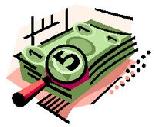
 |
|
| Financial Terms | |
| Lag |
|
Information about financial, finance, business, accounting, payroll, inventory, investment, money, inventory control, stock trading, financial advisor, tax advisor, credit.
Main Page: investment, inventory, financial advisor, finance, credit, stock trading, tax advisor, accounting, |
Definition of Lag
LagPayment of a financial obligation later than is expected or required, as in lead and lag. Also, the number
Related Terms:Lag response of prepaymentsThere is typically a lag of about three months between the time the weighted net cost of normal spoilagethe cost of spoiled work less the estimated disposal value of that work normal spoilagespoilage that has been planned or foreseen; is a product cost Spoilage, abnormalSpoilage arising from the production process that exceeds the normal Spoilage, normalThe amount of spoilage that naturally arises as part of a production Payments patternescribes the lagged collection pattern of receivables, for instance the probability that a Serial covarianceThe covariance between a variable and the lagged value of the variable; the same as  method of neglecta method of treating spoiled units in the Moving-averages chartA financial chart that plots leading and lagging Product costThe total of all costs assigned to a product, typically including direct Operational Earnings ManagementManagement actions taken in the effort to create stable Carrying costThe cost of holding inventory, which can include insurance, Related to : financial, finance, business, accounting, payroll, inventory, investment, money, inventory control, stock trading, financial advisor, tax advisor, credit. |